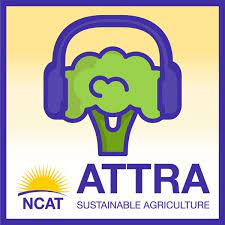This episode of Voices from the Field is part of a series co-produced by ATTRA and SARE that explores the different ways farmers are working to create new local markets for specialty and niche crops. Each partner episode will address a different production system or crop–from endives to small-grain value chains–and will feature farmers sharing their production and marketing strategies, challenges and successes along the way.
The Commercial Potential of Mulberries in the Midwest
If you’re curious about new opportunities in tree fruit production for your farm, listen as Ohio farmer Weston Lombard talks about his experience with mulberries. In it, Lombard and NCAT Sustainable Horticulture Specialist Guy Ames discuss the commercial possibilities and challenges mulberries present, along with different cultivars and growing strategies.
Lombard was a SARE Farmer/Rancher Grant recipient in 2016 for the project Field Testing the Mulberry for Commercial Production in the Midwest. He has successfully incorporated mulberries into the agroforestry system on his farm, where harvested leaves and dropped fruit provide excellent forage for chickens and hogs. His main income streams are through u-pick events and by propagating and selling nursery stock.
Related SARE Resources:
Field Testing the Mulberry for Commercial Production in the Midwest
Sustainable Agriculture Solutions for Appalachia: Mulberry Agroforestry
Mulberry Production with Weston Lombard
Related ATTRA Resources:
Fruit Trees, Orchards, and Vines for Natural Growing in the Ozarks
Community Forest Gardens: Case Studies Throughout the United States
Subscribe to ATTRA- Voices from the Field wherever you get your podcasts.
Want more information? See the related SARE grant:
This material is based upon work that is supported by the National Institute of Food and Agriculture, U.S. Department of Agriculture through the Sustainable Agriculture Research and Education (SARE) program. Any opinions, findings, conclusions, or recommendations expressed in this publication are those of the author(s) and do not necessarily reflect the view of the U.S. Department of Agriculture or SARE.
